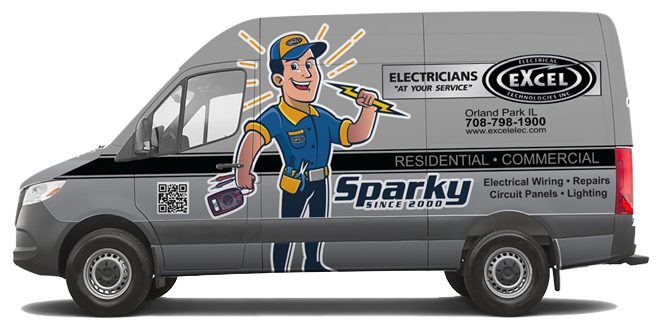
The Problem with Knob and Tube Wiring
By: hemant
Knob and tube wiring was once a state-of-the-art solution for electrical systems in older homes. However, as electrical standards have evolved, this outdated wiring method has become a significant concern for homeowners. If you’re in Chicagoland—whether in Burr Ridge, Chicago Heights, Evergreen Park, Tinley Park, or any surrounding area—and you’re considering a property with knob and tube wiring, you may be asking: Is it bad to buy a house with knob and tube wiring? At Excel Electrical Technologies, we understand that your home’s safety and efficiency are paramount.

The Main Issues With Knob & Tube Wiring
Knob and tube wiring presents several challenges that modern electrical systems no longer face:
- Safety Concerns: Outdated insulation, lack of grounding, and increased risks of overheating make knob and tube wiring a potential hazard. These issues are particularly pressing in older homes found in neighborhoods such as Flossmoor, Oak Forest, and Orland Park.
- Code Compliance: You might wonder, Is knob and tube wiring up to code? Modern standards require wiring that meets today’s safety and efficiency benchmarks, which knob and tube systems often do not.
- Impact on Property Value: If you’re asking, Should I get rid of knob and tube wiring? the answer is usually yes. Updating your wiring enhances safety and can positively impact your home’s market value, especially when buying or selling in areas like Lemont, Matteson, and Mokena.
- Cost Considerations: How much does it cost to rewire an old house from knob and tube? While costs vary depending on the extent of the work required, investing in updated wiring can save you money in the long term by reducing safety risks and increasing energy efficiency.
Sparky’s Advice
Knob and tubing can be unsafe for many reasons, mainly because it’s missing the grounding or safety component. Additionally, it can be misleading as sometimes people install 3 prong receptacle outlets, which give the illusion that there is a grounded system without knowing that knob and tube wiring is present behind the walls.” Learn more about Sparky!
Do I Need To Replace My Old Wiring?
In most cases, the answer is yes. Even if your knob and tube wiring appears to be functioning, the inherent risks associated with this outdated system mean that upgrading to a modern electrical setup is often the safest and most cost-effective solution. When in doubt, call in a professional to assess your specific situation and discuss your options. This is exactly what Excel Electrical Technologies specializes in—providing thorough inspections and tailored recommendations for every home in Chicagoland, from Chicago to Oak Lawn and beyond.
How Can Excel Electrical Technologies Help
At Excel Electrical Technologies, we offer comprehensive residential electrical services designed to meet your needs with precision and care. Here’s what sets us apart:
- Local Expertise Since 2000: We’ve proudly served communities across Chicagoland, including Chicago, Chicago Heights, Evergreen Park, Flossmoor, Frankfort, Homewood, Hazel Crest, Homer Glen, Lemont, Matteson, Merrionette Park, Mokena, Oak Forest, Oak Lawn, Olympia Fields, Orland Park, Palos Hills, Palos Park, and Tinley Park.
- Guaranteed Satisfaction: We stand by our work with a 100% satisfaction guarantee, a 10-year warranty on workmanship, and a 5-year warranty on parts we supply.
- Transparent Pricing: With guaranteed price quotes, you’ll never be caught off guard by unexpected costs.
- Commitment to Safety: We take your personal safety seriously. By installing and repairing with meticulous care, we correct any wiring irregularities and ensure your home meets modern electrical standards.
If you’re dealing with knob and tube wiring or any other electrical concerns, it’s time to call the experts. Ready for a hassle-free, no-pressure quote? Call us today or fill out our form to get started on upgrading your residential electrical system with the trusted professionals at Excel Electrical Technologies.





